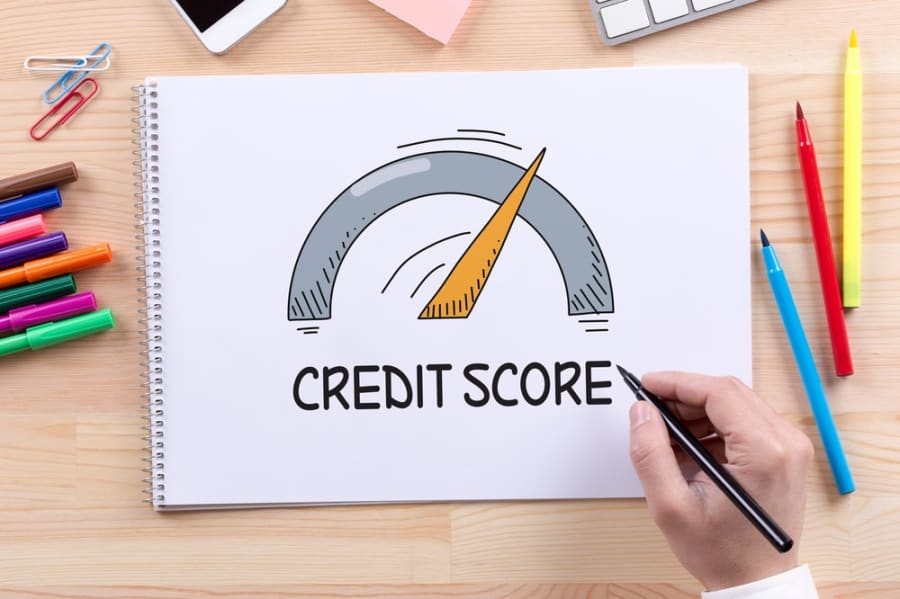
Credit history is an indispensible source of information if a credit institution has to determine a person’s credit standing, thereby assigning them the particular credit score. But since reality always tends to be stranger than fiction, it might so happen that a person with no history of credit transactions wishes to apply for a loan. The main challenge here is that the concerned bank or financial institution would, in all likelihood, reject such a man’s loan application for a lack of information on his past credit transactions. In this scenario, it would be really tragic for the person, especially if he had wished to take a loan to honour any contingency or to buy something of immense importance.
However, to make a credit history of a person from scratch is not as daunting or difficult as it might sound like. In fact, it is something that can be very easily done, if done carefully and with a sense of urgency and diligence. All it needs is enough patience and enough knowledge of how banks and various financial institutions often work together to preserve and perpetuate their own monetary interests, by virtue of being financial institutions playing a crucial role in the functioning of any state’s economy. So, what are the ways in which a person with no credit history can have a credit history? Well, by following these steps, it’s fairly easy:
1. We tend to miss the obvious in understanding the deepest mysteries of life. But in this case, banks would hesitate to lend a loan to a person without any credit history as they would be unsure of whether or not the person would be able to return the loan amount, along with the amount of accumulated interest. Just as small drops make up an ocean, so does a credit card makes up the basis for your credit history. Ordinarily, there are two kinds of credit cards: unsecured and secured credit cards.
Unsecured credit cards are without a doubt the best way to start your credit history. But sadly, beginners are not given unsecured credit cards to start their journey with, because they have no past credit history to begin with. Unsecured credit cards are the ones that have no security or collateral attached with them, and it is offered to people with a stable source of income and a history of credit worthiness upon which the bank can rely its faith upon. On the other hand, secured credit cards are the second type of credit card you can avail yourself if the lenders are reluctant to issue an unsecured credit card to you. These cards can also be used by those beginners in the journey of formation of a credit history.
- While beginners can’t directly own an unsecured credit card, they certainly can become the authorized users of unsecured credit cards. This might sound like a credit-hack of sorts, but honestly, this a method by which people new to the arena of credit can actually be the authorized users of unsecured cards by the respective card users. However, the authorized users need to be very careful while using the card, as one single slip and the credit score of the card’s owner could go down.
- Don’t apply for multiple cards at once (or within a reasonably short period of time). This is because every time you apply for a credit card, your credit score suffers a slight diminishing effect, but magnify this with the number of credit cards applied for and the dent on the credit score could prove to be fatal. Besides, applying for too many credit cards would make an impression of you being a person hungry for more and more credit.
- If you want to build up a healthy and proper credit score, you got to use your credit cards on more or less a regular basis. Since it takes sufficient time for a proper credit card to materialize, use of the credit card regularly and the repayment of dues on a timely basis go a long way in making your credit score a strong one. It’s strongly advised that you ought to use your credit card at least once a month,
- Your credit card would not be free of a leash, and that leash is nothing more than the maximum amount of credit limit a bank of financial institution allows a card user to have. In this case, businesses and banks tend to measure the credit worthiness of a person by the balance-to-limit ratio. Fundamentally, it’s a ratio through which once can measure the ration of the balance in the credit card and the credit limit permissible. Ideally, you should keep this limit a little lesser than 30%.
- Try to pay your EMIs and instalment on time as your regularity in paying your dues are always reported by banks to credit-bureaus, who are involved with drawing up titbits of information that pertains to your credit history that could be used to prepare your credit score. By being timely in your payments, not only are you having a good impression on the bank but also ensuring the preservation and consolidation of your credit score.
- Try to get hold of an unsecured credit card after a full year of building up your credit-worthiness, reflected in your credit score. Usually, a year is considered sufficient enough time to prove your worth on managing the issues ofd credit deftly and maturely. A change from secured to an unsecured credit card is a huge change, since you are freed from the obligations of collateral and you can get a bigger limit and better perks.
8. Lastly, remember that your credit history is just that – a history. Therefore your credit history would take time for it to be formed, consolidated and assessed, after which you would be able to enjoy all that trust faith people of a higher credit score enjoy.
